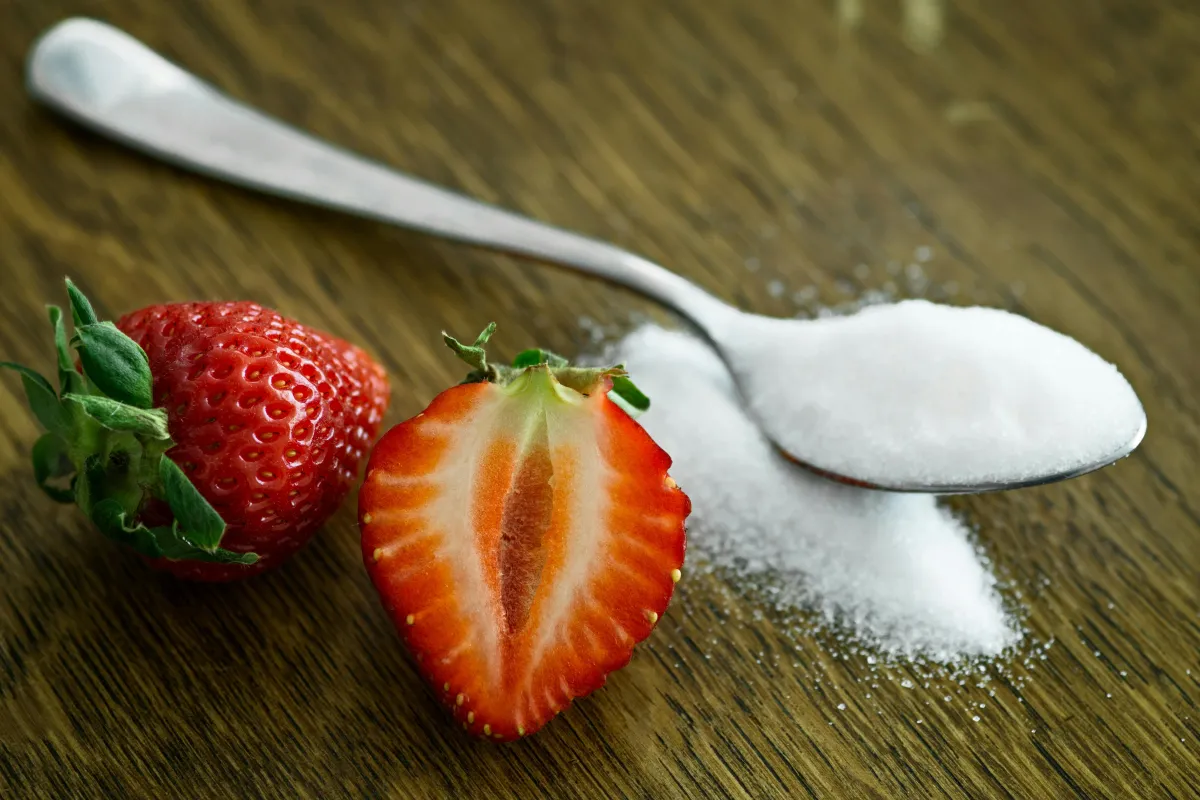Discover The Latest Blogs
Stay updated with Our Informative Blog Posts

Glucose, Fructose & High Fructose Corn Syrup: What’s the Difference, and Why It Matters - Olivia Oneid
Glucose, Fructose & High Fructose Corn Syrup: What’s the Difference, and Why It Matters
Let’s be real—sugar gets a bad rap. But not all sugars are created equal, and not all of them are “bad.” What actually matters is how they behave in your body, how often you're having them, and what else is going on in your diet and lifestyle.
So today, we’re breaking down the difference between glucose, fructose, and high fructose corn syrup (HFCS)—so you can make informed decisions without fearing your food.
What Is Glucose?
Glucose is the main sugar your body uses for energy. It’s found in things like rice, bread, fruits, potatoes—basically, most carbs.
Once you eat it, glucose enters your bloodstream and triggers the release of insulin, a hormone that helps shuttle glucose into your muscles, liver, and other tissues to be used as fuel or stored for later use.
👉 You need glucose to think clearly, train hard, and recover well. It’s especially helpful around workouts, when your muscles are primed to absorb it.
What About Fructose?
Fructose is the sugar found naturally in fruit, honey, and some vegetables. Unlike glucose, fructose doesn’t go directly into your bloodstream. Instead, it goes straight to your liver.
If your liver has room, fructose gets converted into glycogen (a stored form of sugar). But if your liver is already full, some of that excess fructose can be converted into fat, especially if it’s coming from processed sources and eaten in large amounts over time.
That doesn’t mean fruit is bad. Fruit also contains fibre, water, antioxidants, and nutrients that slow digestion and support your overall health. Fruit is also a mix of glucose and fructose, not pure fructose. The issue isn’t fruit—it’s context and quantity.
So, What Is High Fructose Corn Syrup (HFCS)?
HFCS is a sweetener made from corn that contains a mix of glucose and fructose, usually in a 55:45 ratio (fructose to glucose), similar to table sugar (sucrose). It’s inexpensive, shelf-stable, and commonly found in sodas, packaged snacks, condiments, sweetened yogurts, and other products.
The problem isn’t the molecule itself—it’s how easily we can overconsume it without realizing it. Liquid calories (like soda) don’t register satiety the same way whole foods do. That’s where overconsumption becomes easy, especially when your body doesn’t get the usual hunger/fullness feedback.
How to Use This Info Without Overthinking Every Bite
Here’s how to use this knowledge to make better nutrition choices without spiralling into food fear:
Whole fruit is not the enemy
Fruit has fibre, nutrients, and water—eat it with meals or as a snack, and it’s incredibly beneficial.Check your liquid sugar
Sodas, energy drinks, fancy coffee drinks—these can rack up fast. They’re easy to overdo and don’t keep you full.Pair your carbs with protein or fat
This slows down the glucose spike and helps keep you full longer. Think: banana with peanut butter or rice with chicken and veggies.Zoom out and look at the pattern
The issue isn’t one cookie or soda—it’s your overall intake. What are you doing consistently? That’s what shapes your health.Don’t “cut” sugar—crowd it out
Focus on adding more nutrient-dense, whole foods to your day. When you're well-fueled and nourished, you naturally crave less processed stuff.
The Bottom Line
Glucose and fructose are both part of a normal, functioning metabolism. Your body knows how to handle them—it’s the context, frequency, and dose that matter most.
So instead of fearing sugar, understand it. Use it when it serves your goals (like around workouts), minimize it when it doesn’t (like before bed in soda form), and focus on building meals that nourish you and keep you satisfied.
Want help personalizing your nutrition or learning how to manage cravings without restriction? That’s exactly what we do—reach out to me or one of our coaches at www.masterathletic.com anytime.
P.S. If you enjoyed Dr. Mike’s newsletter from last week and applied science gets your neurons firing and your biceps growing, join Dr. Mike’s newsletter for more no-BS insights that actually move the needle. No idea what we are talking about when we mention the newsletter? Read here
Olivia Oneid
Coach, Master Athletic Performance




